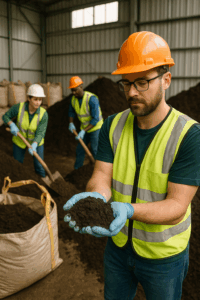Sargassum, once a nuisance on Caribbean shores, is being repurposed by innovative scientists and entrepreneurs into bio-compressed natural gas. This initiative not only addresses the environmental crisis caused by the invasive algae but also presents a sustainable energy solution for the region.
Transforming Sargassum: Caribbean Innovators Turn Invasive Weed into Biofuel

Transforming Sargassum: Caribbean Innovators Turn Invasive Weed into Biofuel
Scientists in the Caribbean are revolutionizing the energy landscape by converting invasive sargassum seaweed into a sustainable biofuel for vehicles.
In 2011, Caribbean beaches found themselves inundated with large swathes of sargassum, an invasive seaweed transported by currents from the Sargasso Sea. Initially met with confusion, this unsightly algae began to rot on the shores, releasing an unpleasant odor that dissuaded tourists and posed economic challenges for island economies like Barbados, which heavily rely on tourism. The situation escalated in 2018 when Barbados’ Prime Minister Mia Mottley proclaimed a national emergency due to the crisis created by sargassum.
However, in a surprising twist, a dedicated team of Caribbean scientists and environmentalists is harnessing the invasive seaweed’s potential to create a valuable biofuel. This initiative represents a beacon of hope, as the researchers recently unveiled one of the world’s first vehicles powered by bio-compressed natural gas. This innovative fuel utilizes not only sargassum but also wastewater from local rum distilleries and animal dung from indigenous blackbelly sheep, fostering a sustainable energy source that could drastically reduce reliance on fossil fuels.
Dr. Legena Henry, the project’s founder and a renewable energy expert at the University of the West Indies (UWI), acknowledges the ongoing challenges but sees promise in sargassum. While the team initially explored sugarcane as a biofuel source, they found its production unsuitable for their ambitious goals. In stark contrast, Dr. Henry confidently asserted, “We will never run out of sargassum.”
Brittney McKenzie, one of Dr. Henry’s students, proposed the idea of utilizing sargassum after observing the vast amount of seaweed being removed from the beaches. This inspired the team to experiment; in just a short time, preliminary research returned promising results. The project garnered national attention, which accelerated its funding, igniting excitement across the region.
Biologist Shamika Spencer, another key member of the team, emphasizes the urgency of tackling the sargassum threat that not only endangers tourism but also poses risks to human health and marine life. The initiative aims not only to combat these issues but also to ensure that the sargassum is repurposed rather than sent to landfills, all while aiming for a zero-emission goal for the Caribbean.
The team is now working on a pilot project to further demonstrate the feasibility of their innovations, with aspirations of establishing a biogas station to facilitate larger-scale fuel production. The series of tests to convert ordinary vehicles into ones powered by the new biofuel has been met with enthusiasm, underscoring the potential of such technology to echo beyond the Caribbean.
Encouraging other young scientists, McKenzie, reflects on the journey and the magnitude of seeing her concept come to life. The culmination of years of research, tireless determination, and incident discovery exemplifies the innovative spirit of the Caribbean, paving the way for biofuel strategies that could inspire similar efforts globally. By transforming a disruptive ecological challenge into a sustainable opportunity, Caribbean scientists have forged a path towards a more sustainable and resilient future, showcasing an example of innovation that could benefit coastal regions around the world grappling with similar sargassum challenges.



















